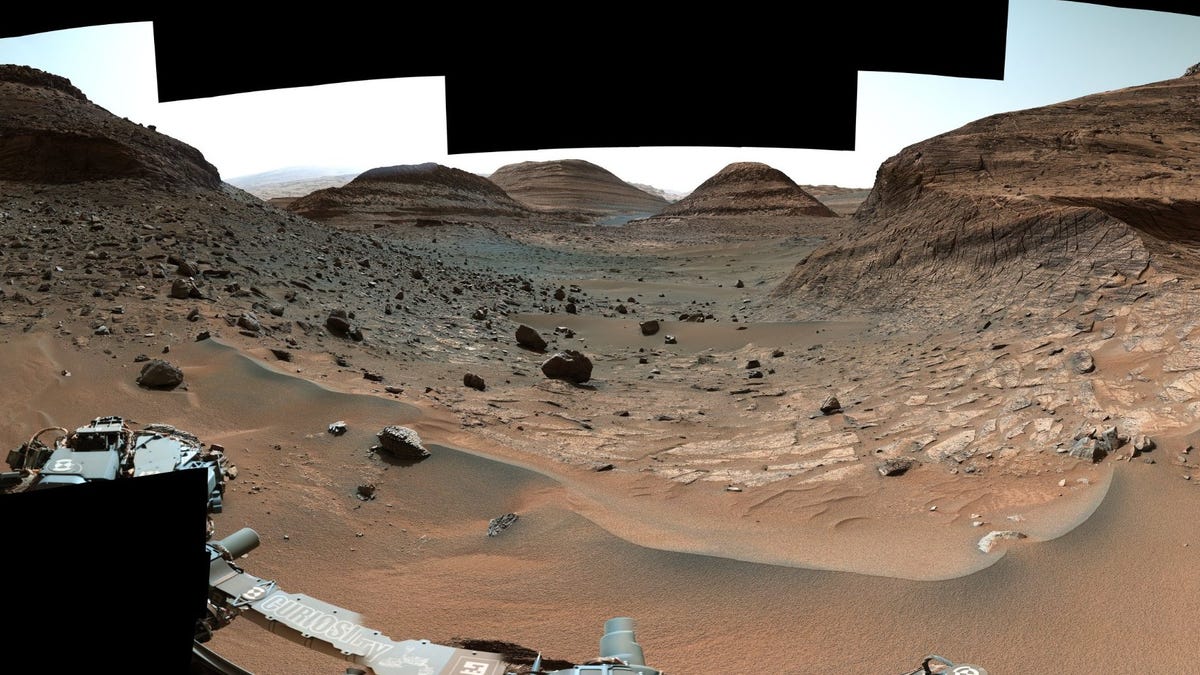NASA Mars Rover Reaches Awe-Inspiring Salty Region at Last
Scientists celebrate salty minerals on Mars.
More than 10 years on Mars. Dust and sand and cold and pointy rocks. NASA's Curiosity rover has weathered a lot on its way to a triumphant arrival in what's called the "sulfate-bearing unit" of the Gale Crater. This fascinating place is full of salty minerals, and it's a treasure trove for scientists investigating the history of water on the red planet.
NASA described the sulfate-bearing area as a "long-sought region" and "special" in a Wednesday statement. The space agency's Mars Reconnaissance Orbiter spacecraft had scoped out the area well before Curiosity arrived in Gale Crater in 2012, so researchers have been anticipating an up-close look for some time.
A close-up camera on NASA's Curiosity rover took this view of the drill hole in the Canaima rock on Oct. 16, 2022.
Curiosity has wasted no time in getting acquainted with the region. "Soon after arriving, the rover discovered a diverse array of rock types and signs of past water, among them popcorn-textured nodules and salty minerals such as magnesium sulfate (Epsom salt is one kind), calcium sulfate (including gypsum), and sodium chloride (ordinary table salt)," said NASA.
The rover recently drilled into a tantalizing rock -- named "Canaima" -- to take a closer look at its chemistry and composition. Curiosity is like a science lab on wheels, so it's using on-board equipment to analyze the sample it took from the rock.
Among other things, Curiosity will look for signs of any organic molecules that might be present. Organic matter on Mars has been a hot topic lately since Curiosity's sibling rover Perseverance found some over in the Jezero Crater. Just keep in mind that the discovery of organic molecules doesn't necessarily prove microbial life once existed on Mars.
Curiosity is helping scientists work through some questions about the origins of the salty minerals, which may've been left behind by streams and ponds that dried up billions of years ago in the planet's past. "Assuming the hypothesis is correct, these minerals offer tantalizing clues as to how -- and why -- the Red Planet's climate changed from being more Earth-like to the frozen desert it is today," NASA said.
Curiosity has traversed rocks (which have given its wheels quite a beating over time) and sand to get to where it is. The payoff, besides the cool science stuff, has been in stunning landscape views. An Aug. 14 panorama shows a gorgeous view of rounded Martian hills and rock-strewn sand dunes.
Curiosity was heading toward the center of this area in this Aug. 14, 2022, panorama taken as the rover was aiming for the sulfate-bearing region.
Curiosity science operations coordinator Elena Amador-French talked about experiencing a sense of awe about the views. "The sand ridges were gorgeous. You see perfect little rover tracks on them. And the cliffs were beautiful -- we got really close to the walls," said Amador-French about the pass seen in the panorama.
The sulfate-bearing area is only just starting to give up its secrets to Curiosity. It's also keeping the rover team busy working out how to navigate the rocks and sand while keeping Curiosity safe and functional. Said Amador-French, "The more and more interesting the science results get, the more obstacles Mars seems to throw at us."


